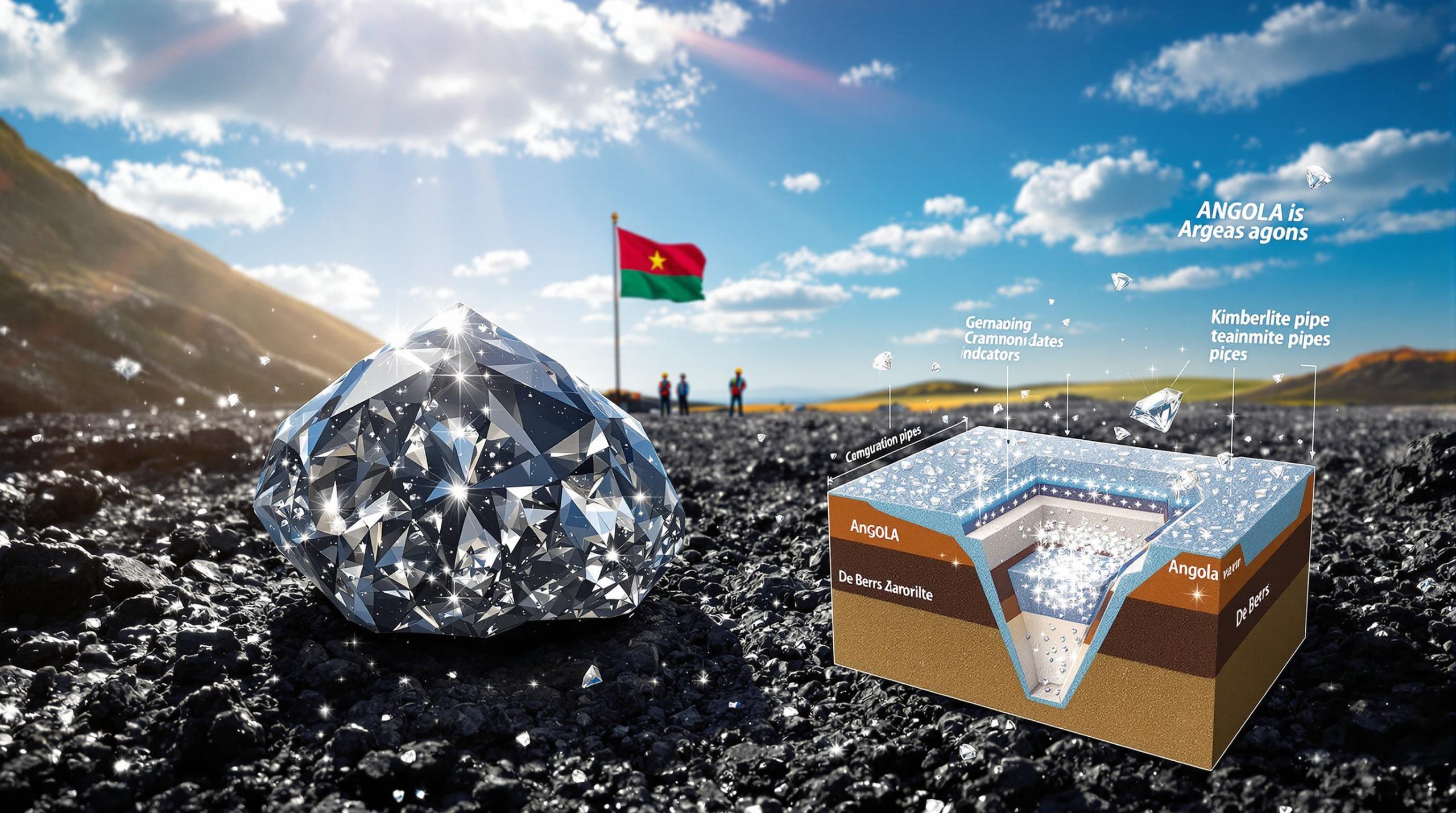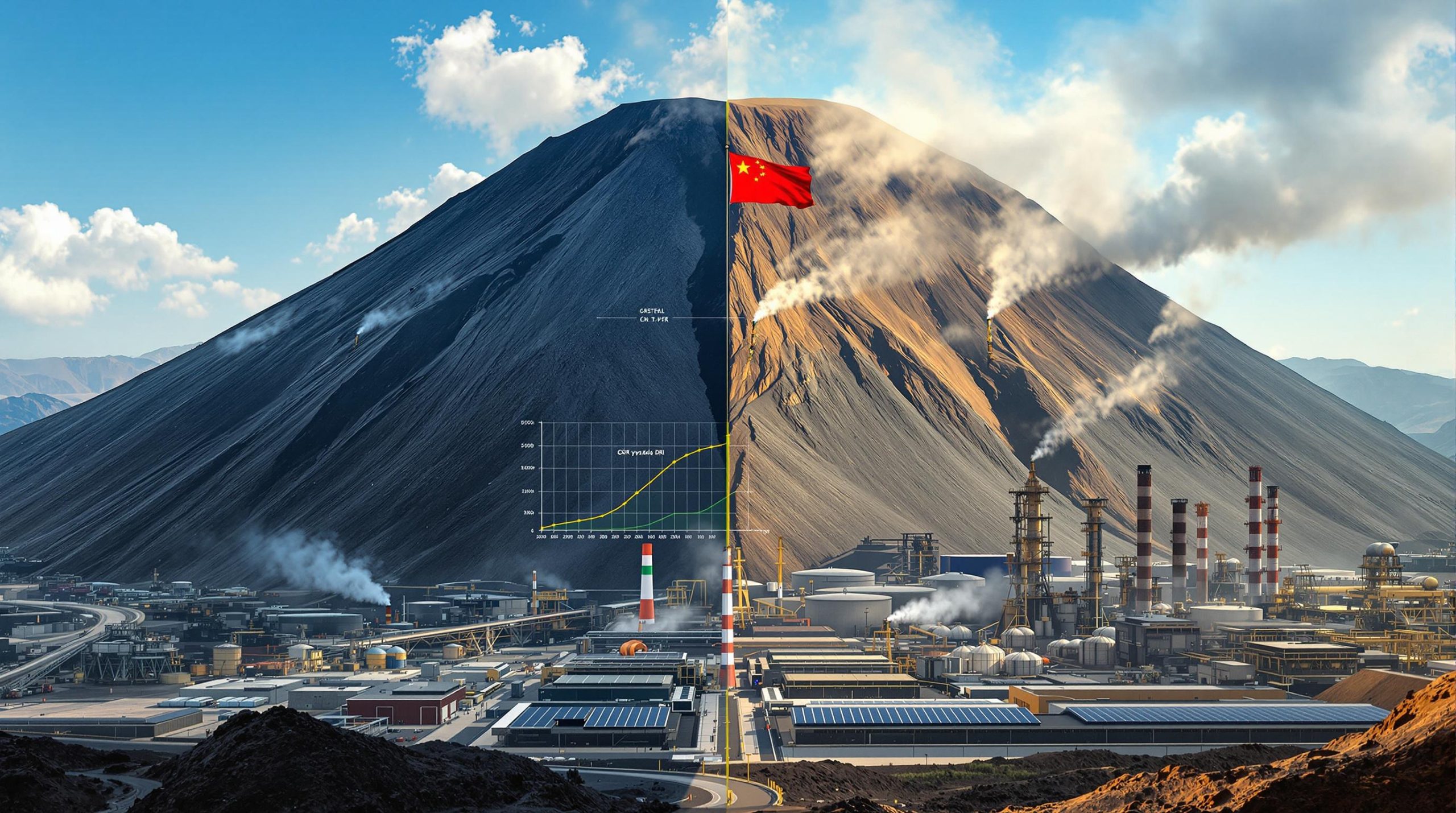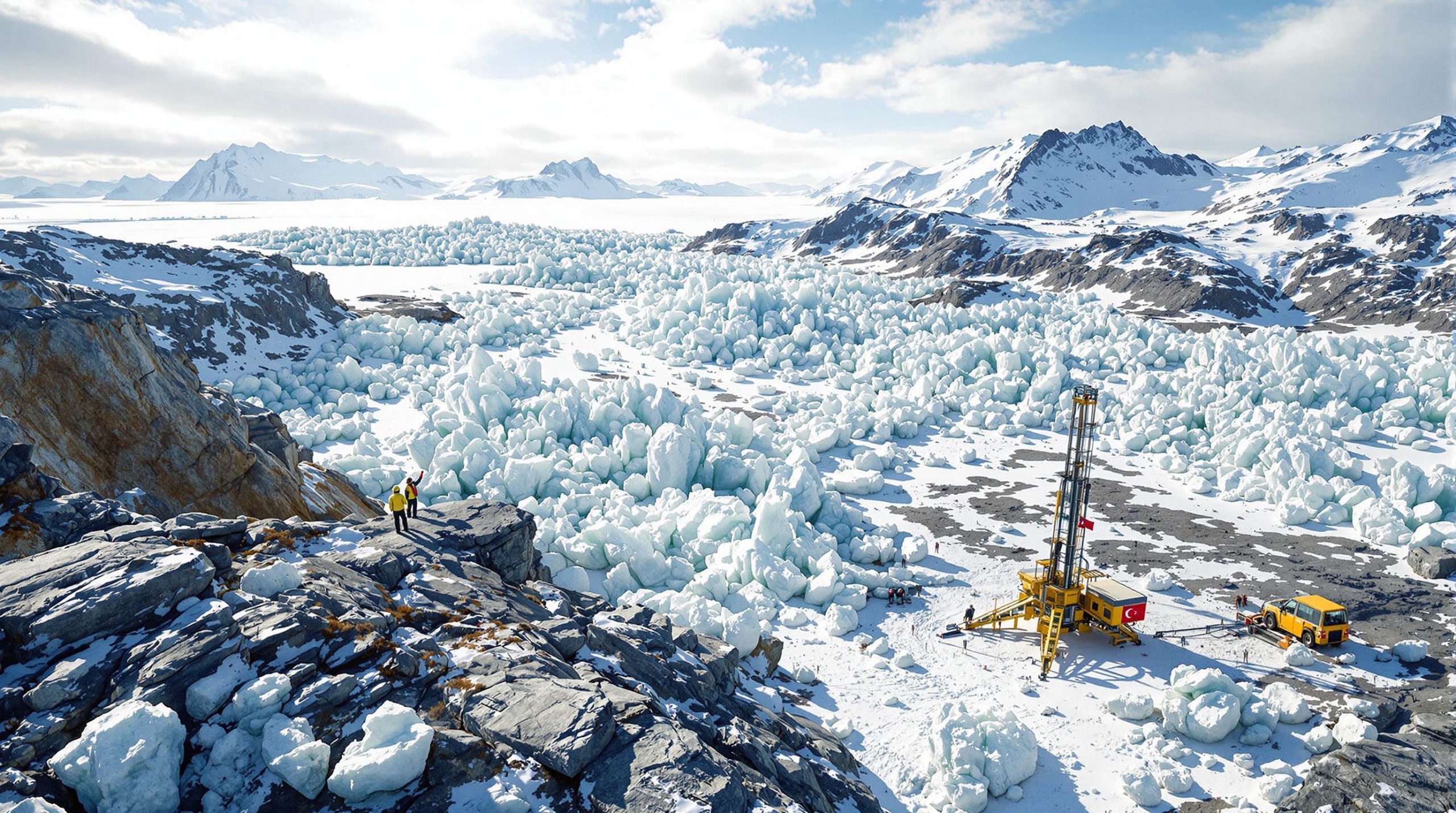Record-Breaking Production and Shipment Milestones: Fortescue's Exceptional Quarter
Fortescue Metals Group has delivered what industry experts are calling an "exceptional quarter," setting new benchmarks across multiple operational metrics in the iron ore sector. The company's latest quarterly results demonstrate remarkable performance that has strengthened its position as an industry leader and lowest-cost producer.
Unprecedented Shipping Volumes
Fortescue shipped an impressive 55.2 million tonnes (Mt) of iron ore during the June quarter, culminating in total shipments of 198.4Mt for FY25—establishing a new annual record for the company. This achievement is particularly notable considering the industry-wide logistical challenges that have impacted the resources sector throughout the year.
"Fortescue's performance this year has been exceptional. We met all aspects of our market guidance and cemented our position as the industry's lowest-cost producer," said Dino Otranto, Fortescue Metals and Operations CEO.
The company demonstrated remarkable consistency in its delivery performance, maintaining reliable output despite external pressures affecting global supply chains. This resilience has been attributed to systematic improvements in Fortescue's logistics infrastructure and operational protocols.
Production Surge Across Operations
Beyond shipping milestones, Fortescue's mining operations showed substantial growth, with 64.3Mt of iron ore mined during the quarter—representing a significant 16% increase from the previous quarter. Similarly, processing volumes reached 54.4Mt, marking a 14% increase quarter-on-quarter.
These impressive gains weren't merely incremental improvements but reflected systematic enhancements in operational efficiency that drove higher throughput across the company's Western Australian operations. Industry analysts note that such consistency at scale demonstrates Fortescue's operational maturity and technical excellence.
Cost Leadership Position Strengthened
In perhaps the most telling indicator of Fortescue's exceptional performance, the company recorded its first annual decline in hematite C1 costs since FY20. This achievement reinforces Fortescue's status as the industry's lowest-cost producer—a critical competitive advantage in the cyclical iron ore price trends.
The cost reduction resulted from strategic management initiatives that have yielded measurable results across mining, processing, and transportation activities. By maintaining disciplined cost controls while simultaneously increasing production volumes, Fortescue has created a powerful operating leverage that enhances profitability even during periods of price volatility.
"We remain committed to disciplined growth, underpinned by targeted R&D that unlocks innovative solutions to drive down costs," explained Agustin Pichot, Fortescue Growth and Energy CEO.
How Did Fortescue Achieve These Exceptional Results?
The company's record-breaking performance didn't happen by chance. Fortescue implemented a comprehensive strategy focused on operational excellence, strategic project development, and maintaining financial discipline.
Operational Excellence Strategy
At the core of Fortescue's success lies an intensified focus on safety protocols and performance optimization. The company has systematically identified and eliminated production bottlenecks through technological innovations and workflow improvements.
"Our relentless focus on safety and efficiency enabled systematic improvements throughout our operations," noted Otranto in the quarterly report. This approach created a virtuous cycle where safety improvements led to operational efficiencies, which in turn supported higher production volumes.
The company has implemented efficiency-enhancing technologies across its operations, though specific details of these technological deployments remain proprietary. Industry experts suggest these likely include advanced automation systems, AI-driven logistics optimization, and enhanced equipment monitoring capabilities.
Iron Bridge Development Progress
Fortescue continues its staged ramp-up of the Iron Bridge operation in Western Australia, with a strategic timeline established for reaching nameplate capacity by FY28. This magnetite project represents a significant diversification from the company's traditional hematite operations and will produce a high-grade (67% Fe) magnetite concentrate.
The carefully managed integration with existing production infrastructure has allowed Fortescue to maintain current operations while scaling up this new asset. The company has implemented a methodical approach to the ramp-up process, prioritizing operational stability over rapid expansion.
Financial Position and Stability
Fortescue maintained a strong financial position throughout the quarter, reporting $US4.3 billion ($6.5 billion AUD) in cash reserves at quarter's end and $US5.4 billion ($8.1 billion AUD) in gross debt.
This robust liquidity position provides Fortescue with exceptional operational flexibility and supports ongoing strategic initiatives across both traditional mining operations and future-focused technologies. The balance sheet strength allows the company to pursue disciplined growth opportunities while maintaining financial resilience against market volatility.
What's Next for Fortescue After This Exceptional Quarter?
With record results established, Fortescue has outlined clear strategic priorities for FY26 that build upon its operational momentum while advancing sustainability transformation initiatives.
Strategic Priorities for FY26
Fortescue is accelerating the Iron Bridge ramp-up to optimize production capacity from this new asset. Based on recent performance, the company has positioned itself to set more ambitious production targets for the coming fiscal year.
"We're focused on safely ramping up Iron Bridge, breaking new production records, and accelerating decarbonization," said Otranto, highlighting the company's multi-faceted approach to growth.
The company continues to enhance operational efficiencies to maintain its cost leadership position—a critical competitive advantage in the cyclical iron ore market forecast. Additionally, Fortescue is strengthening supply chain resilience to support increased output, implementing lessons learned from its record-breaking quarter.
Decarbonization and Sustainability Initiatives
Fortescue made significant progress on its decarbonization roadmap during the quarter, completing a key transmission line between the Solomon and Eliwana iron ore mines. This infrastructure will enable renewable energy sharing between operational sites and support the company's broader mining electrification trends.
In a milestone for mining equipment electrification, Fortescue deployed its first electric drill rig to operational sites. This technology advancement demonstrates the company's refined approach to green technology implementation, focusing on commercially viable decarbonization projects that deliver both environmental and operational benefits.
"Operational excellence is driven by our push to decarbonise, innovate, and evolve," explained Pichot, emphasizing the synergy between sustainability and business performance.
The company's research and development efforts increasingly focus on "green iron" advancement—exploring methods to produce iron with lower carbon intensity through innovative process technologies.
Leadership and Organizational Changes
Fortescue announced the appointment of Agustin Pichot as Fortescue Growth and Energy CEO, effective July 1, 2025. Under this new leadership, the company has renewed its focus on disciplined growth and strategic realignment of its global project pipeline.
Pichot's background in global strategy since joining Fortescue in 2018 has informed the company's enhanced emphasis on research and development to drive innovation. The leadership transition appears seamless, with clear continuity in strategic direction while bringing fresh perspectives to growth opportunities.
How Is Fortescue Balancing Growth and Sustainability?
Fortescue has demonstrated a pragmatic approach to balancing its growth ambitions with sustainability commitments, prioritizing initiatives that deliver both commercial and environmental benefits.
Strategic Project Evaluation
In a significant strategic refinement, Fortescue decided not to proceed with the Arizona hydrogen project in the US and canceled the PEM50 green hydrogen facility in Gladstone, Queensland. These decisions reflect the company's refined project selection criteria that emphasizes commercial outcomes alongside environmental benefits.
"We refined our global pipeline with a sharpened focus on commercial outcomes," Pichot explained, highlighting the company's disciplined approach to capital allocation.
This strategic recalibration has enabled Fortescue to make targeted investments in high-return sustainability initiatives that more directly support its core mining operations. The company appears to be prioritizing decarbonization projects with clear operational benefits and proven technologies over more speculative green hydrogen ventures.
Green Metals and Energy Strategy
Despite the cancellation of certain hydrogen projects, Fortescue maintains its continued commitment to decarbonization across operations. The company has pivoted toward targeted research and development in green technology solutions that align more closely with its core business operations.
The focus has shifted toward cost-effective implementation of sustainable practices that deliver measurable benefits in the near term. This pragmatic approach suggests Fortescue is integrating green initiatives with core business operations rather than pursuing them as separate ventures.
Operational Impact of Sustainability Measures
The electrification of mining equipment, beginning with drill rigs, represents a tangible example of Fortescue's sustainability strategy in action. These electric rigs reduce diesel consumption and associated emissions while maintaining or improving operational performance.
Energy transmission infrastructure improvements between operational sites support the company's renewable energy integration efforts. This balanced approach to implementing new technologies ensures that sustainability initiatives contribute positively to operational performance metrics rather than competing with them.
What Does This Performance Mean for Fortescue's Market Position?
Fortescue's exceptional quarterly results have significant implications for its competitive positioning within the global iron ore market and its future strategic trajectory.
Competitive Advantages Strengthened
The enhanced production capacity provides Fortescue with greater market flexibility, allowing the company to optimize its product mix and respond to changing market conditions. Combined with its industry-leading cost position, this creates substantial pricing power in negotiations with customers.
Fortescue's operational excellence has established new industry benchmarks for efficiency and productivity. The company's balanced approach to traditional mining operations and future-focused technologies positions it favorably against competitors who may be more heavily weighted toward either conventional operations or speculative green initiatives.
Investment Implications
Fortescue has demonstrated exceptional operational execution capabilities, consistently delivering on production targets while maintaining cost discipline. The strong financial position—with $US4.3 billion in cash reserves—supports both ongoing operations and strategic growth initiatives.
The company's balanced approach to traditional mining and future-focused technologies provides investors with exposure to both current commodity cycles and emerging green metal opportunities. Under evolving leadership, Fortescue has maintained a clear strategic direction that balances shareholder returns with long-term sustainability goals.
Industry Impact and Influence
Fortescue is setting new standards for operational efficiency in iron ore mining through its systematic approach to performance optimization. The company is pioneering practical approaches to mining decarbonization that prioritize commercial viability alongside environmental benefits.
By demonstrating the viability of sustainability initiatives in resource extraction, Fortescue is influencing industry practices more broadly. The company's balanced approach to commercial outcomes and environmental responsibilities provides a template for resource companies navigating the energy transition.
FAQ: Understanding Fortescue's Exceptional Quarter
What factors contributed most to Fortescue's record shipments?
Fortescue's record shipments resulted from a combination of operational efficiency improvements, strategic capacity expansions, and effective supply chain management. The company's systematic approach to identifying and eliminating bottlenecks across the mining, processing, and logistics chain enabled consistent performance increases.
Key factors included:
- Enhanced mining productivity (16% quarter-on-quarter increase)
- Improved processing throughput (14% quarter-on-quarter increase)
- Optimized logistics operations despite industry-wide challenges
- Integration of technological improvements across the value chain
How does Fortescue compare to other major iron ore producers?
Fortescue has solidified its position as the industry's lowest-cost producer, with C1 costs declining for the first time since FY20. This cost advantage, combined with record production volumes, strengthens the company's competitive position against major producers like Rio Tinto and BHP.
While detailed competitor comparisons require current market data, Fortescue's 198.4Mt annual shipment volume and declining cost profile demonstrate exceptional operational performance relative to industry peers. The company's focus on operational excellence and cost leadership provides resilience during market fluctuations.
What is the significance of the Iron Bridge operation?
Iron Bridge represents a strategic expansion of Fortescue's production capacity and product diversification. The operation will produce high-grade (67% Fe) magnetite concentrate, complementing Fortescue's traditional hematite products and allowing the company to address premium market segments.
The operation is being carefully ramped up to reach its nameplate capacity by FY28, with FY26 representing a critical period in this progression. Once fully operational, Iron Bridge will enhance Fortescue's market position by expanding its product portfolio and providing access to premium pricing for higher-grade products.
How is Fortescue addressing environmental concerns in its operations?
Fortescue is implementing a balanced approach to sustainability, focusing on commercially viable decarbonization initiatives. Key elements include:
- Electrification of mining equipment, beginning with drill rigs
- Development of renewable energy infrastructure, including the Solomon-Eliwana transmission line
- Refined project selection criteria prioritizing initiatives with meaningful environmental impact and commercial viability
- Research and development focused on "green iron" and lower-carbon production methods
The company has demonstrated pragmatism in its sustainability approach, canceling certain hydrogen projects while advancing electrification and renewable energy integration that more directly support its mining operations. This strategy aligns with broader demand insights analysis for the sector that highlights the growing importance of sustainable production methods.
Want To Invest In Companies With Record-Breaking Performance?
Discovery Alert's proprietary Discovery IQ model instantly identifies ASX-listed companies with exceptional operational milestones, similar to Fortescue's record-breaking quarter, giving you an edge in the market before these opportunities become mainstream. Explore our dedicated discoveries page to see how timely alerts on significant announcements can translate into substantial investment returns.




